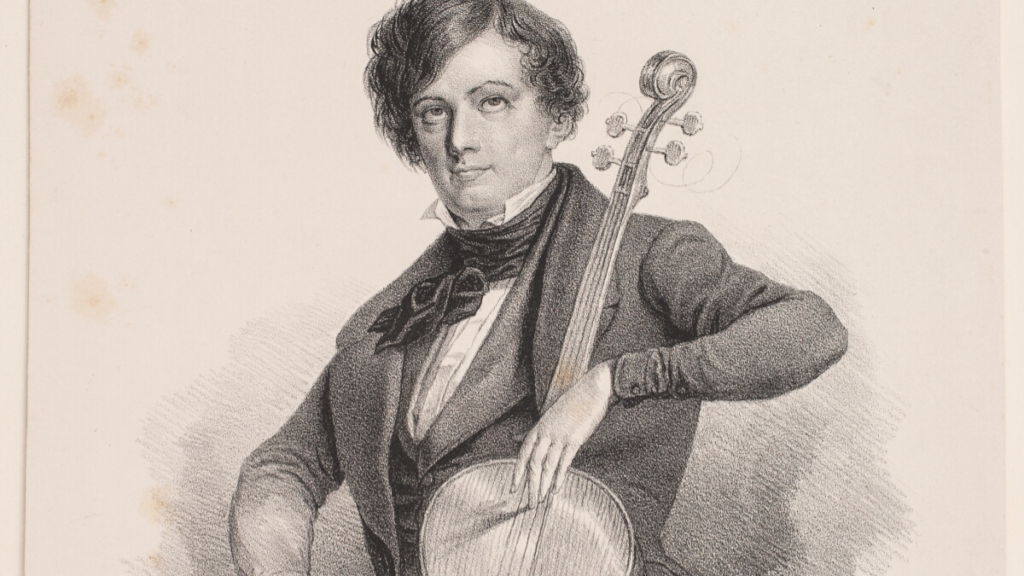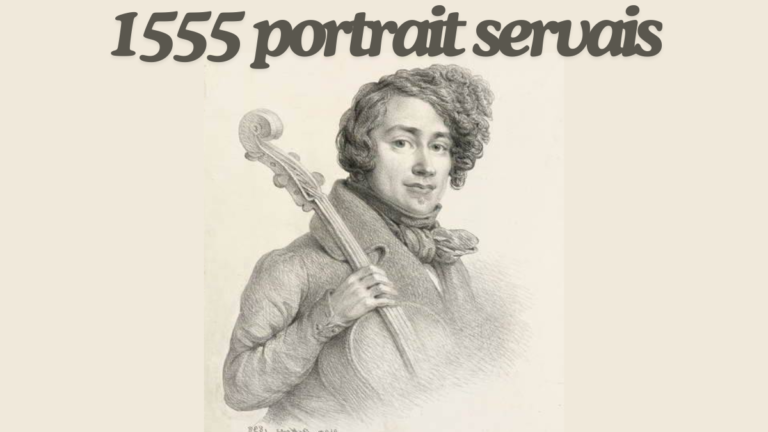Discover the story and significance of the 1555 portrait Servais in Renaissance art history.
Introduction
Welcome, art lovers and records buffs, to an intriguing exploration of a forgotten gem within the international of Renaissance art: the 1555 portrait Servais. Amidst the swirling colors and tricky information normal of the period, this artwork emerges as a superb example of Renaissance portraiture. Not only does it seize the essence of its subject, Servais, however it also offers a window into the society, style, and artistry of the time. Join us as we delve into the fascinating tale and enduring significance of this historical portray that maintains to fascinate and encourage.
The Context of the Renaissance Period
The Renaissance generation become a time of brilliant transition and transformation, with profound adjustments sweeping across Europe‘s cultural and intellectual landscape. This chapter in history marked a departure from the medieval period and paved the manner for modernity thru its specific combination of artwork, technology, and humanism.
Overview of the Renaissance Era
The Renaissance, which means that “rebirth,” spanned from the 14th to the 17th century, starting in Italy and step by step spreading throughout Europe. This age became characterized by means of a revival of classical getting to know, a renewed interest in ancient Greek and Roman notion, and the emergence of new perspectives in philosophy, art, and technological know-how. People started to embody a extra human-targeted approach to life in place of focusing solely on the divine or the afterlife, which were customary during the medieval duration.
This time become ripe with interest and exploration. The invention of the printing press with the aid of Johannes Gutenberg in 1440 allowed for the wide dissemination of ideas, which become vital for the profound highbrow changes that occurred. Universities flourished, classical texts have been rediscovered, and there was a burgeoning interest in individual achievement and expression.
Key Artistic Developments of the Time
Art all through the Renaissance went via an incredible evolution. Artists started to hire techniques that brought intensity and realism to their work, shifting faraway from the flatter, extra symbolic types of medieval artwork. New techniques such as attitude, chiaroscuro (the usage of sturdy contrasts between mild and darkish), and sfumato (a smoky, blurred impact to create a more life like image) had been delivered and perfected.
The use of oil paints have become more great, imparting a richness in shade and texture that allowed for extra element and vibrancy. Frescoes and sculptures also reached new heights as artists became professional in capturing the human form in all its complexity and splendor.
Prominent Artists and their Influence
The Renaissance was home to some of the maximum celebrated artists of all time, whose works have continued to inspire and teach generations. Figures like Leonardo da Vinci, Michelangelo, Raphael, and Titian have been no longer simplest artists but also scientists, inventors, and designers, reflecting the Renaissance ideal of the nicely-rounded individual.
- Leonardo da Vinci: Often hailed as a “Renaissance Man,” Leonardo’s masterpieces, inclusive of “The Last Supper” and “Mona Lisa,” showcase his genius in shooting human emotion and depth.
- Michelangelo: Known for his beautiful sculptures like “David” and his paintings at the Sistine Chapel ceiling, Michelangelo’s legacy is a testomony to his bold talent and creative vision.
- Raphael: Celebrated for his graceful compositions and harmonious use of colours, Raphael’s frescoes inside the Vatican and his “School of Athens” continue to be enduring symbols of Renaissance artwork.
Their contributions no longer only formed the generation however additionally laid the foundation for destiny generations of artists, pushing the bounds of what was possible in art work and influencing countless different fields.
Analyzing the 1555 Portrait Servais
The “1555 Portrait of Servais” is a remarkable instance from this flourishing technology, taking pictures the essence and spirit of Renaissance portraiture.
Description of the Artwork
The 1555 portrait Servais is a fascinating photo, encapsulating both the non-public and historic factors function of the time. The concern, Servais, is depicted in a seated position, exuding a sense of calm authority and introspection. Dressed inside the rich garments usual of the Renaissance, the apparel recommendations at a sure fame and wealth, indicating that Servais changed into probable a person of influence or admiration.
The background of the portrait is minimalist, directing the viewer’s interest squarely on the problem and bearing in mind a more intimate connection. The cautious attention to element, from the difficult folds of fabric to the diffused play of mild throughout the face, highlights the artist’s talent and dedication to realism.
Techniques and Materials Used
The artist of the Servais portrait hired strategies synonymous with Renaissance mastery. Oil paint turned into the medium of desire, celebrated for its capability to supply luminous hues and first-class detail. The use of chiaroscuro is obvious, with the interaction of light and shadow adding depth and highlighting the contours of Servais’s face.
Perspective is subtly applied to draw the viewer’s eye closer to the problem, a trademark of Renaissance composition that adds a sense of realism and space. The palette is rich but confined, permitting the textures and layers to talk volumes approximately the challenge’s individual and social standing.
Symbolism and Elements in the Portrait
Every detail inside the portrait consists of capacity symbolism, frequently serving as a narrative approximately the person. The attire, as an example, no longer only indicates private flavor but may also sign affiliations or achievements tied to Servais’s identification.
The posture and expression are similarly telling; a serene demeanor ought to carry a feel of knowledge and authority. The history, although simple, might keep symbolic importance, perhaps representing a philosophical concept or societal price vital to Servais’s life.
In the context of Renaissance art, symbolism often pointed to the bigger quest for know-how and humanity’s region in the international—a topic that resonates within the Servais portrait as it portrays now not just someone, but an embodiment of Renaissance beliefs. In essence, this portrait stands as a historic dialogue, bridging the past with the existing thru its elaborate artistry and layered meanings.
Servais: The Enigmatic Figure
Renaissance artwork is filled with mysteries and hidden tales, and the 1555 portrait Servais isn’t any exception. This charming painting now not most effective captures the essence of a person named Servais but additionally gives us a glimpse into the captivating world of Renaissance Europe.

Historical Background of Servais
First, let’s set the scene for when and where our enigmatic determine lived. Servais may not be a family name these days like da Vinci or Michelangelo. However, he existed in a time humming with trade and creativity—the Renaissance. This became a length marking the revival of classical gaining knowledge of and wisdom after the Middle Ages. It’s stated that in this era, Servais become actively worried within the bustling cultural and highbrow existence.
Although details about his beginning and family continue to be scarce, historic resources trace that he became in all likelihood a scholar, a service provider, or even a consumer of the arts. Such roles might permit him to be seated most of the thinkers and doers of his time, making it potential for him to be immortalized in a portrait.
His Role in Society During the Renaissance
Understanding Servais’ societal function is critical to appreciating his portrait. If we consider Servais as a pupil, his portrait may characterize the thirst for knowledge and highbrow exploration pervasive throughout the Renaissance. Should Servais had been a service provider, his picture would possibly reflect the burgeoning financial system and the rise of a new magnificence of wealthy individuals shaping the social landscape.
Lastly, if we don’t forget Servais as a client of the humanities, it’s smooth to look how his financial contributions may want to have strengthened the work of severa artists, reinforcing the cultural efforts of his time. Despite the mystery surrounding him, it is clear that Servais performed a pivotal function inside the vibrant tapestry of the Renaissance international.
Possible Interpretations of His Portrait
What does the 1555 portrait Servais tell us? Art historians have posed several theories. Some advise that Servais is depicted with items or symbols inside the portrait that hint at his career or non-public hobbies. Others propose that his clothing and style should signify his fame or affluence. The artist’s desire of colors, heritage, and Servais’ expression contribute to a multi-layered narrative, allowing the observer to hypothesize approximately his lifestyles and times. Further, a few interpretations even connect particular factors of the painting to political or philosophical statements pertinent to the generation.
The Artistic Significance
Unraveling the significance of Servais’ portrait involves diving into the treasures of Renaissance art.
The Importance of Portraiture inside the Renaissance
During the Renaissance, portraiture soared to new heights of importance and innovation. Artists had been increasingly more fixated on taking pictures the human enjoy’s beauty, complexity, and individuality. Portraits have been not mere information—they were statements of identity and status. Patrons and outstanding figures like Servais commissioned these works to explicit energy, wealth, and highbrow accomplishment. This surge in portraiture can also be seen as a mirrored image of the Renaissance’s humanistic recognition, in which the man or woman, with all their skills and flaws, took middle stage.
How the Portrait Reflects the Era’s Artistic Values
The 1555 portrait Servais encapsulates the inventive values loved at some stage in the Renaissance. First, there’s the emphasis on realism. The difficult detail—from pores and skin texture to clothing cloth—speaks to the Renaissance artists’ mastery of angle and shape. Light and shadow play meaningfully across Servais’ visage, highlighting the artist’s know-how of human anatomy and three-dimensionality. Moreover, the routine use of symbolism inside the art work speaks volumes approximately the artist’s storytelling genius, embedding layers of which means with each brushstroke.
Its Impact on Later Art Movements
The ripples of Renaissance art, inclusive of Servais’ portrait, can be felt in diverse later art actions that drew idea from its standards. The meticulous interest to element and pursuit of realism prompted Baroque artists, who emulated and elevated on those techniques. In the Enlightenment, portraiture embraced human nature’s complexities, harking back to Renaissance beliefs. Even contemporary artwork, with its summary roots, displays factors of individualism and exploration that date returned to this period.
In last, the 1555 portrait Servais stands as a testament to the rich legacy of Renaissance art and its continued have an impact on at the tapestry of art records. By inspecting each the man or woman and the piece, we respect the layers upon layers of cultural, societal, and inventive importance wrapped up in this splendid portrait.
Conclusion
The 1555 portrait Servais is a fascinating spotlight in the global of Renaissance art. Its meticulous element and colourful expression inform us as lots about the cultural environment of the technology as they do about the person it portrays. This portray isn’t only a canvas with colours; it’s a window into a time while artwork turned into a crucial form of storytelling and self-expression.
- Historical Insight: It offers precise insights into sixteenth-century clothing, social reputation, and values.
- Artistic Achievement: Showcases mastery in shooting human emotion and character.
Whether you’re a seasoned art historian or a curious newcomer, this portrait invitations you to delve deeper into the rich tapestry of Renaissance portraiture. It continues to inspire and tell, proving that art really is a timeless talk throughout centuries.


1 Comment
Pingback: The Evolution Of ProcurementNation.com Logistics Best Guide 2024